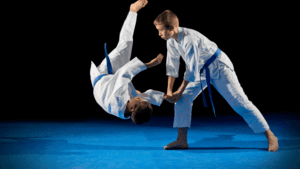What’s the best defense for a coach to run? That’s an impossible question to answer because every coach has different personnel. With that being said, the best defense for any team is the one that favors the strengths of the individual athletes. In addition, the defense must either dictate the pace of the game or effectively counter the opposition’s game plan.
Every defense is broken down into two parts: alignment and coverage. The alignment is how the defense positions themselves on the field before the snap and coverage defines pass responsibilities.
Knowing whether a team prefers the run or pass or has a balance can also determine the perfect defense for your team.
Defenses adjust throughout a game to match the changes on offense. For example, when a team gets down a couple of scores, they may switch to an uptempo, pass-heavy offense. This will feature multiple receivers and quick plays. The defense has to adjust by bringing in extra defenders for the pass and remove a lineman or linebacker. The coverage must also change to account for the immediate need to pass by the offense.
The opposite affect is true for teams that get ahead and or wish to slow the pace of the game down by running the ball. If a team can move the ball on the ground effectively, the defense has to bring more players down in the box, substitute defensive backs for linebackers and lineman and/or change their approach/scheme entirely.
Down and distance determines what coverage and alignment that is shown by a defense, so the frequent change of scheme occurs on each down. For example, if a team plays a base 4-3, cover one on first and second down and limits the offense to only one total yard, third down and long is most likely a pass play. A defense could keep the same alignment or switch to a cover three as the offense brings in two extra receivers. The defense could also respond by shifting to a nickel zone in which there are five defensive backs on the field to account for the pass.
Altering your defensive alignment can also happen when your initial lineup is not working; the defense must make changes that slow down an offense that is picking up chunks of yardage, eating away at the clock and scoring points.
Finally, the most important factor in creating the best defense for your team is your personnel. You can only successfully run a defense that plays into the strength of the players on the field. Do you have quick, athletic linebackers? Are your defensive linemen big and strong? Are your defensive backs physical and athletic. Take into the account the skills and abilities of your athletes before deciding on the defense you want to run. The best defense for any team is one that is most effective in stopping the offense, yielding the best results for the team.
How useful was this post?
Click on a star to rate it!
Average rating 5 / 5. Vote count: 2
No votes so far! Be the first to rate this post.




